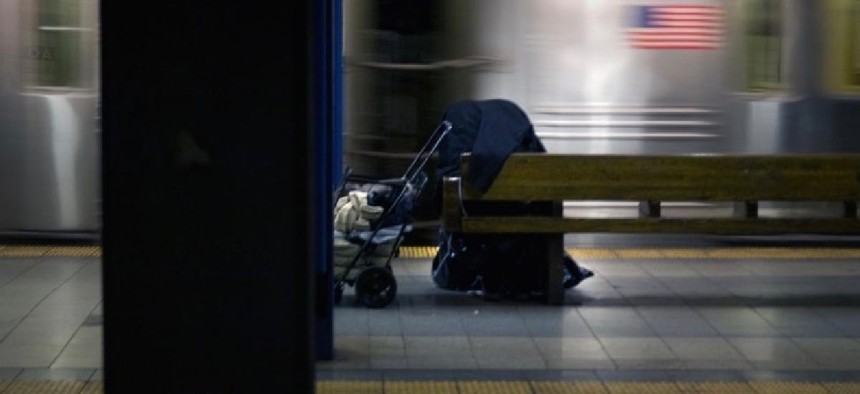Last week Mayor Bill de Blasio heralded his success over two years in helping more than 40,000 people “escape homeless shelters.” These kinds of numbers are difficult to precisely document, but it’s clear the city’s multiple rental subsidy programs targeted to people experiencing homelessness in New York City, their priority for placing a modest number of households from shelter into newly vacant NYCHA public housing each year and their robust homelessness prevention programs have aided thousands of unstably housed people – the mayor said precisely 40,050 New Yorkers in 13,806 households.
Unfortunately for the mayor, media coverage of his celebratory announcement also noted the city’s homeless shelter daily census is rising again. The Aug. 14 Department of Homeless Services daily shelter census counted 59,096 residents in the city’s shelter system, including 23,342 children.
As an advocate for people experiencing homelessness in New York City, I believe our modern-day homelessness crisis was caused by poor public policy choices, and that better policies can end it. The de Blasio rental subsidies, NYCHA priority and homelessness prevention programs are part of those better policies. According to the city, from July 2014 through June 2016, the city’s rental subsidies helped transition 20,517 New Yorkers – men, women and children – from unstable to stable housing. Another 12,562 people in 3,635 households were placed in public housing.
The city has substantially increased support of homeless prevention programs and created several new prevention programs, including a City Council-led effort to provide legal representation to tenants facing eviction in Housing Court. That program has already helped to provide legal services to over 27,000 households. The result: evictions have dropped by 24 percent.
Funding these prevention and stable housing programs is a good investment. The city’s cost for shelter averages $41,000 per year for a family. The city’s emergency rental assistance program that helped 131,000 households over two years cost about $3,600 per case. Anything that rescues families from shelter or unstable housing, or better yet prevents homelessness completely, isn’t just the right thing to do, it also saves substantial taxpayer resources.
So, why the increase in the shelter census amid all this success? The biggest problem is the lack of available units in the rental subsidy programs’ price range. Both the city and state have plans to add significantly more units, especially of critically needed supportive housing that wraps needed services around subsidized housing. But the timeline to deliver the units is over 15 years for housing that is needed right now. What’s more, those programs are back-end loaded, meaning most of the units won’t be available until late in the timeline.
The lack of supply is aggravated by a widespread landlord reticence to accept subsidy vouchers. Many landlords were burned when a previous city subsidy program abruptly ended, leaving landlords hanging. Discrimination against accepting city rent vouchers, or any legal source of rent, is illegal, but widespread. The city should vigorously enforce that law.
Another reason for the shelter increase is far more fascinating. The city launched a groundbreaking outreach effort called HomeStat. Modeled after CrimeStat, the successful computerized resource allocation program used by police, HomeStat dedicates hundreds of city workers daily to canvass thousands of city blocks in areas with significant street homelessness to build relationships with people experiencing homelessness on our streets and in public places. The city then assigns each person a case manager, develops an individual action plan for the individual, connects them with needed services including assisting them to shelter and eventually provides stable housing for each person.
In April, city Human Resources Administration Commissioner Steven Banks noted that “success” for HomeStat could mean an increase in the shelter census. The increase would occur because the step between the street and stable housing would usually be a shelter.
It’s remarkable, because intentionally increasing the shelter census by adopting a better long-term policy requires political courage. Political courage is exceptionally rare. As we approach an election year, as they used to say in the credit card commercial, it’s priceless.
We can end modern-day homelessness as we know it – we can start right now and end it in years, not decades, and by spending less over time than we are spending on homelessness now. But to do it requires that rare political courage. It’s indispensable. With it, and the commitment to stick with the better policies that work, and deliver on creating new supportive housing for people living in deep poverty, we can end modern-day homelessness as we know it.
Jeff Foreman is the director of policy for Care for the Homeless.


